Slow down to keep our crews safe
Kankakee Valley REMC’s

E-BIKES 101: A crash course in electric bicycles










Slow down to keep our crews safe










Now that it’s April, it’s safe to say that spring is officially here. Many see spring as a time for renewal — and a good time to deep clean your house.
As we move into a new season, it could be an opportunity to give back to others in your community. Thanksgiving and Christmas are undoubtedly the most substantial time of year for giving. People feel cheerful and thankful and are willing to help those in need. However, most of those food, clothing, and money donations are gone by the spring. Consider celebrating the arrival of warmer weather by donating to a charity that needs it.
And organizations don’t just need your money or donations. Some of the most significant help can be the donation of your time. Volunteering for a cause that you care about can be a rewarding experience. It’s also an excellent way to get out of the house and meet like-minded people. I bet that you won’t regret spending your limited free time doing something to help others.
My husband and I used to volunteer with an organization called Paws and Think with our dog, Oliver. We would take him to various events as a therapy dog, and he always brought a lot of joy to people who visited with him. We lost him in July, but we have some great memories from volunteering.
Your local electric co-op follows seven cooperative principles, including “concern for community.” Your co-op finds ways to help its members and their community throughout the year. It’s a good lead to follow.

Do you have an organization that is near and dear to you? I would love to hear about it.

 Britt Davis Editor bdavis@indianaec.org
Britt Davis Editor bdavis@indianaec.org
On the menu: July: No-bake recipes, deadline May 1. If we publish your recipe on our food pages, we’ll send you a $10 gift card.
Giveaway: Enter to win a 10-piece gardening kit with tote bag. Visit indianaconnection.org/talk-to-us/contests or send your contact information to the address below. The deadline to enter is April 30.
you.
Three ways to contact us: To send us recipes, photos, letters and entries for gift drawings, please use the forms on our website indianaconnection.org; email info@indianaconnection.org; or send to Indiana Connection, 8888 Keystone Crossing, Suite 1600, Indianapolis, IN 46240-4606.
VOLUME 73 • NUMBER 10
ISSN 0745-4651 • USPS 262-340
Published monthly by Indiana Electric Cooperatives
Indiana Connection is for and about members of Indiana’s locally-owned, not-for-profit electric cooperatives. It helps consumers use electricity safely and efficiently; understand energy issues; connect with their co-op; and celebrate life in Indiana. Over 311,000 residents and businesses receive the magazine as part of their electric co-op membership. The average printed and mailed cost per issue is 54 cents.
CONTACT US:
8888 Keystone Crossing, Suite 1600 Indianapolis, IN 46240-4606 317-487-2220
info@indianaconnection.org IndianaConnection.org
INDIANA ELECTRIC COOPERATIVES OFFICERS:
Steve McMichael President
Dr. Richard Leeper Vice President
Jamey Marcum Secretary/Treasurer
John Cassady CEO
EDITORIAL STAFF:
Britt Davis Editor
Holly Huffman Communication Support Specialist
Lauren Carman Communication Manager
Kiley Lipps Graphic Designer
Ashley Curry Production and Design Coordinator
Amber Knight Creative Manager
Mandy Barth Vice President of Communication
ADVERTISING:
American MainStreet Publications
Cheryl Solomon, local ad representative; 512-441-5200; amp.coop
Crosshair Media 502-216-8537; crosshairmedia.net
Paid advertisements are not endorsements by any electric cooperative or this publication.
UNSOLICITED MATERIAL:
Indiana Connection does not use unsolicited freelance manuscripts or photographs and assumes no responsibility for the safekeeping or return of unsolicited material.
SUBSCRIPTIONS:
$12 for individuals not subscribing through participating REMCs/RECs.
CHANGE OF ADDRESS:
If you receive Indiana Connection through your electric co-op membership, report address changes to your local co-op.
POSTAGE:
Periodicals postage paid at Indianapolis, Indiana, and at additional mailing offices.
POSTMASTER:
Send change of address to: Indiana Connection, 8888 Keystone Crossing, Suite 1600, Indianapolis, IN 46240-4606. Include key number.
No portion of Indiana Connection may be reproduced without permission of the editor.


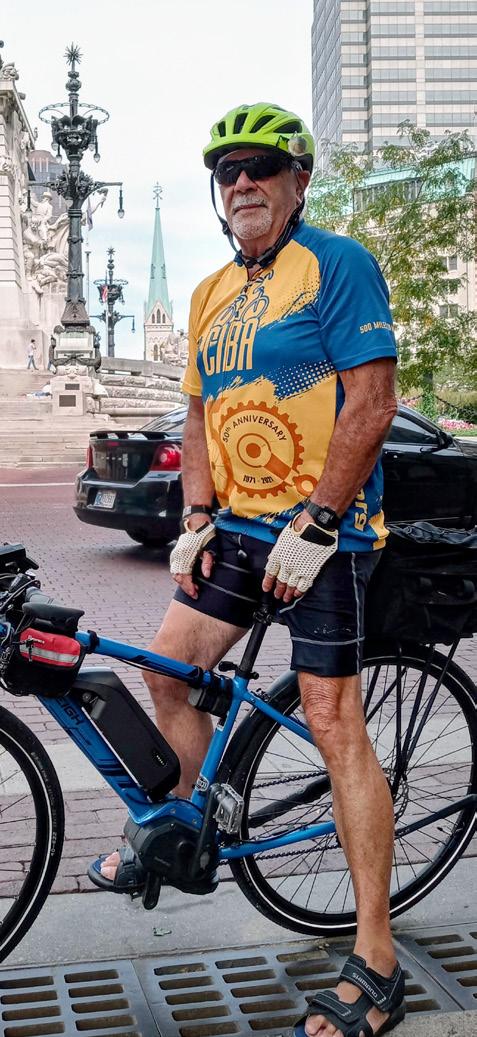
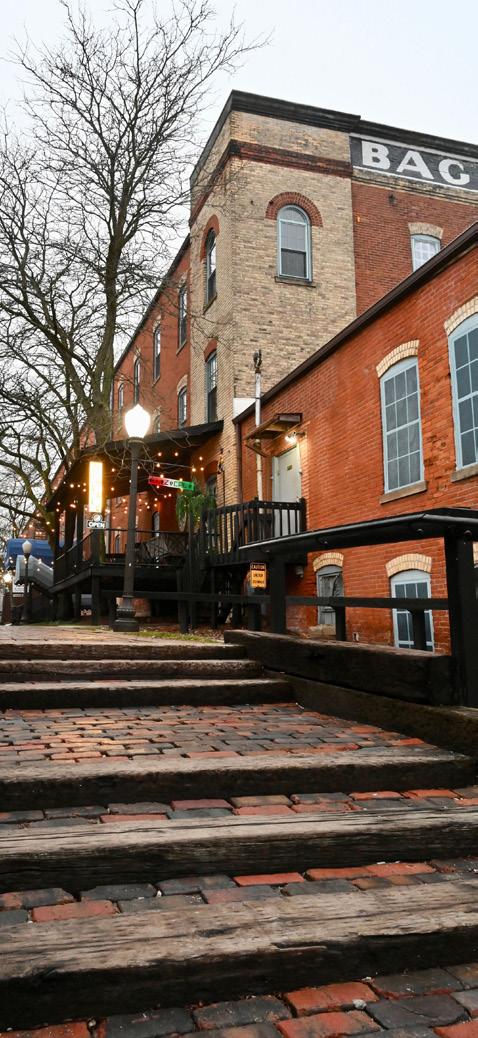
29
28
29
30

On the
kvremc.com
CONTACT US
Toll Free: 800-552-2622
Local: 219-733-2511
OFFICE HOURS
7:30 a.m.– 4 p.m.
Central Time
Monday-Friday
STREET ADDRESS
8642 W. U.S. Highway 30 Wanatah, IN 46390
MAILING ADDRESS
P.O. Box 157, Wanatah, IN 46390
EMERGENCY POWER OUTAGES
Power outages can be reported by calling 800-552-2622 or through the SmartHub app.
KANKAKEE VALLEY REMC STAFF
Scott Sears, Chief Executive Officer
Alissa Tucker, Executive Assistant
Angie Swanson, Office Manager
Amanda Steeb, Communications and Marketing Director
Dave Howell, Facilities Manager
Scott Hanson, Director of Operations
Bri Travis, Director of Engineering
FROM THE CEO:
I’m proud to be part of the Kankakee Valley REMC team for many reasons, and one of the biggest is the commitment your co-op’s employees demonstrate to serving your needs. Every member of our team is focused on keeping members like you safe and comfortable.
This month, we’re asking members to pay extra attention to our team’s comfort and safety. April’s calendar includes Work Zone Awareness Week and Lineworker Appreciation Day. Both events call attention to the critical work co-op employees perform outdoors to ensure your electricity is there when you need it.
Our people work in all kinds of weather and inherently dangerous situations. For example, when one of our lineworkers is in their truck’s bucket while restoring power to someone’s home (maybe yours), they’re typically alongside some of our area’s busier roads. Working with high-voltage equipment demands their complete concentration so they can protect themselves.
Know what else deserves complete concentration? Driving your vehicle past them. Every member of our line crews can share scary stories of speeding vehicles in their work area when restoring power to someone’s home. They have seen drivers concentrating intently on
their phones as they have shot past their work vehicle. A few seconds of inattention can lead to tragedies for all involved.
When you’re driving and you see one of our trucks on the side of the road or one of our line crews looking up at power lines, please slow down and use caution. If you can change lanes or move to increase the distance between your vehicle and the workers, please do so. Also, pay attention to other drivers around you. Another driver who’s distracted or aggressive in a work zone can put you in danger, too.
I know there are times when we’re all in a hurry, but did you realize that slowing down to 45 mph from 55 mph through a 5-mile work zone adds less than a minute and a half to your trip?
Our lineworkers and everyone at Kankakee Valley REMC are focused on making your home and family as safe and comfortable as possible. When you protect their safety by driving carefully, you help ensure they get home safely to their families.


The Kankakee Valley REMC Junior Board of Directors program offers students unique opportunities to engage with community leaders. The program is facilitated by Kankakee Valley REMC and Indiana Electric Cooperatives legislative team. The Junior Board recently visited the Indiana Statehouse, immersing themselves in the daily lives of legislators working for their constituents.
Despite the bustling atmosphere, legislators took time to greet and thank the students for their visit. Representative Soliday, Boy, Culp, and Senator Charbonneau were among those the students had the pleasure of meeting. They engaged in insightful conversations about their role and offered valuable career advice. These exchanges provided a glimpse into the legislators' responsibilities and driving force in their work.
Following these interactions, the students were treated to a tour of the Statehouse. They learned about the history of the construction of the Statehouse and explored the chambers of the Supreme Court, Court of Appeals, Senate, and House of Representatives. The students even saw one of the vaults that used to hold the states silver and gold reserves. This firsthand
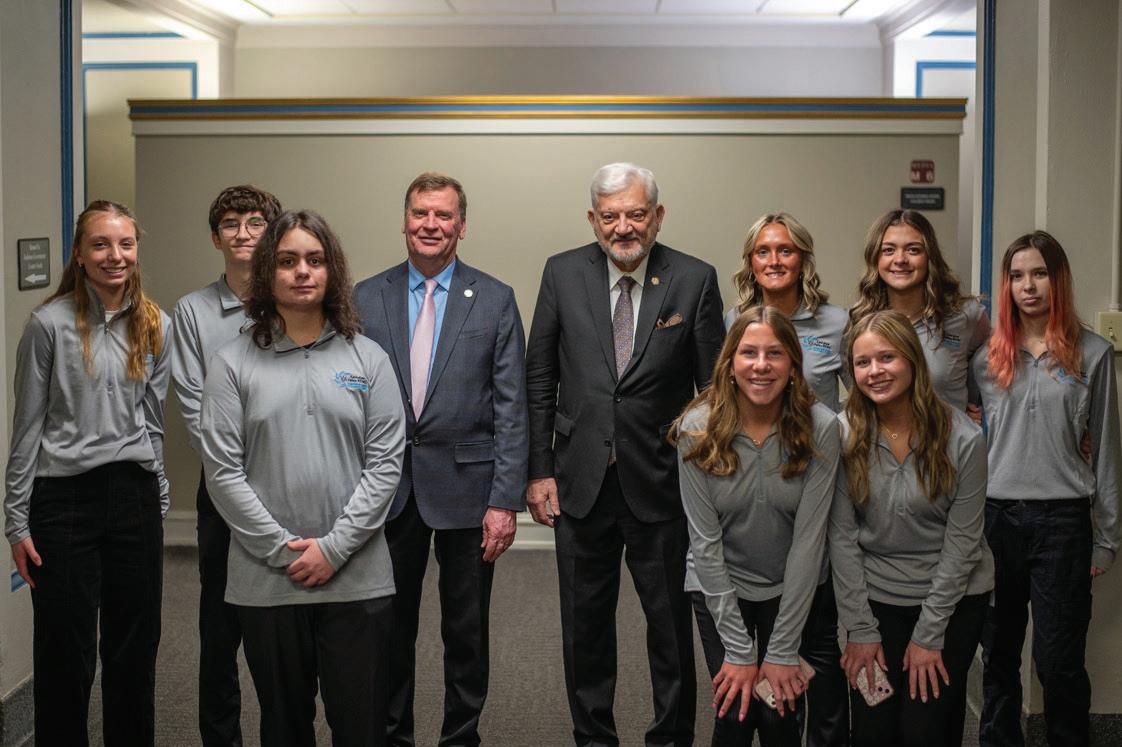
experience offered students a deeper understanding of the workings of the government.
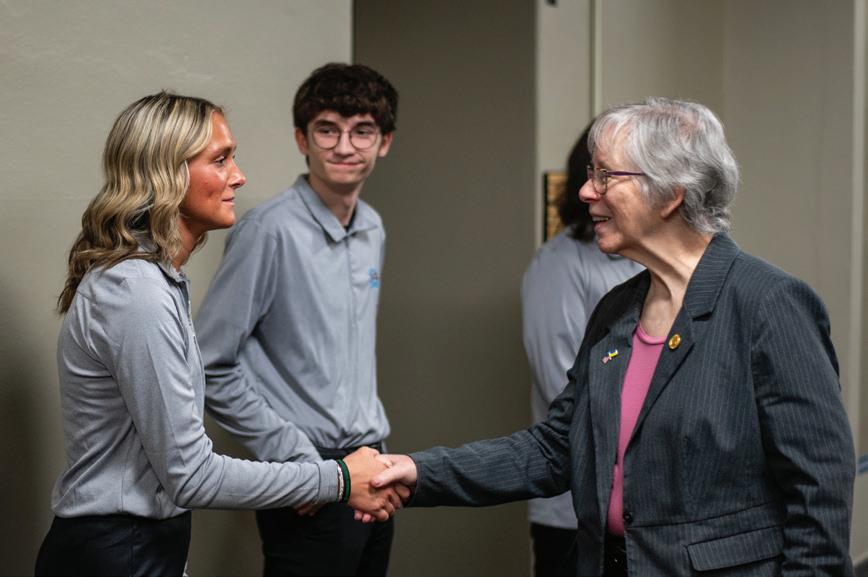
"We are fortunate to have legislators that share the same belief of investing in our youth to prepare them to be the future leaders of our communities. We appreciate the legislators welcoming the students at the Statehouse and taking the time to share with them how government works. We hope opportunities like this will give students the exposure to someday consider getting involved in local government as a way to serve," said Amanda Steeb, the director of communications and marketing for Kankakee Valley REMC.
The Junior Board of Directors program, sponsored by Kankakee Valley REMC, is open to high school juniors through a competitive application process. Those interested in participating in the program for the 20242025 school year can submit applications in June. This initiative aims to empower young individuals with insights into governance and leadership, paving the way for them to become future community leaders.
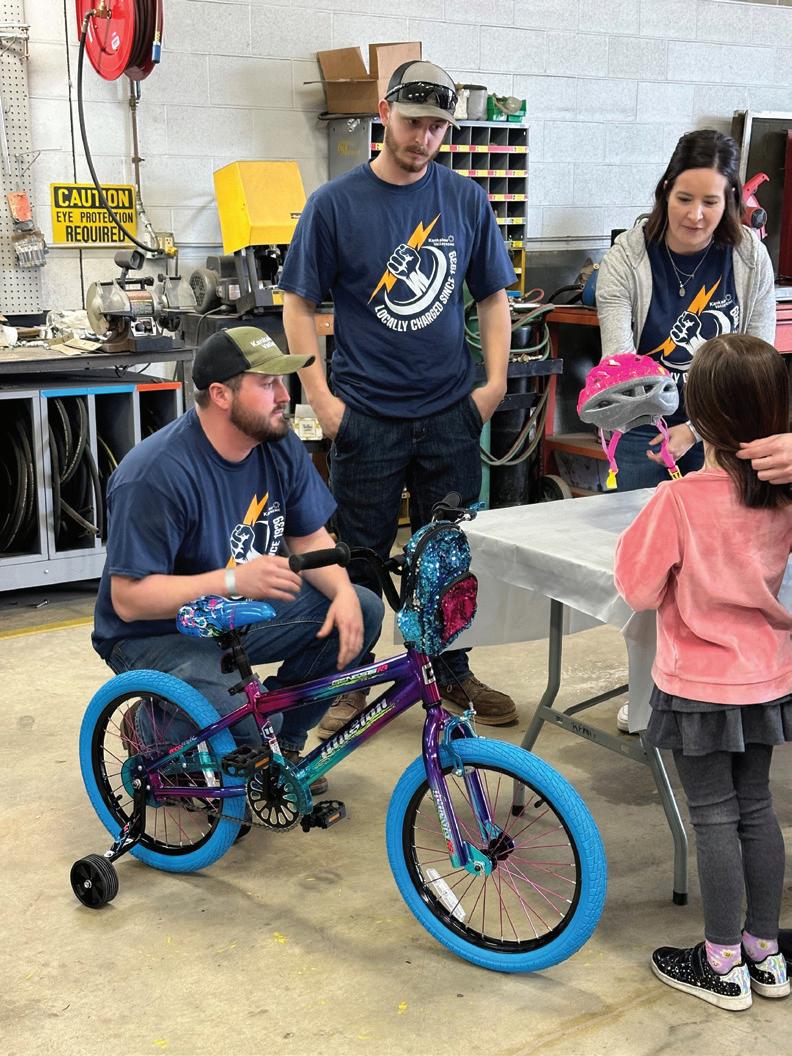
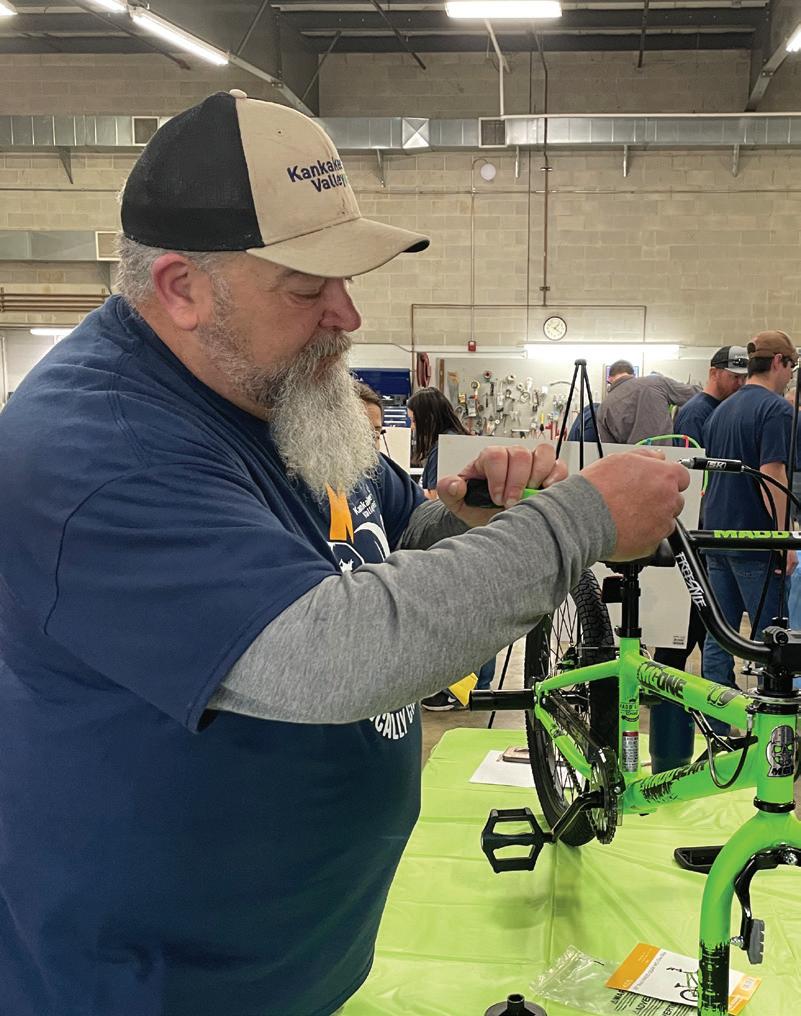
Last month, KV REMC employees took a detour from the ordinary day and embarked on a one-of-a-kind teambuilding activity that involved collaboration, problem-solving, and communication. The mission? Build a bicycle.
Armed with an array of tools, KV REMC employee teams earned parts through trivia challenges.
Navigating twists and turns, they faced the challenge of finding the wrong parts, which required teamwork and communication to locate the correct components.
As the 11 bikes took form, a group of students from the community joined in on the fun. Handpicked from their schools, these inspectors tackled the tough job of ensuring the bikes
were assembled and built with precision and safety in mind. They even took the bikes for a spin.
The day ended with a surprise as the co-op CEO gifted each student the bike they had inspected and test-ridden.
Jeff Maroon, GIS administrator at the co-op, said, “This was a great team-building event where we worked with co-workers outside of our department. The highlight was seeing the students’ excitement when the CEO revealed they could take the bikes home.”
This activity kicks off a series of team-building ventures for the year, each emphasizing collaboration and community giveback.
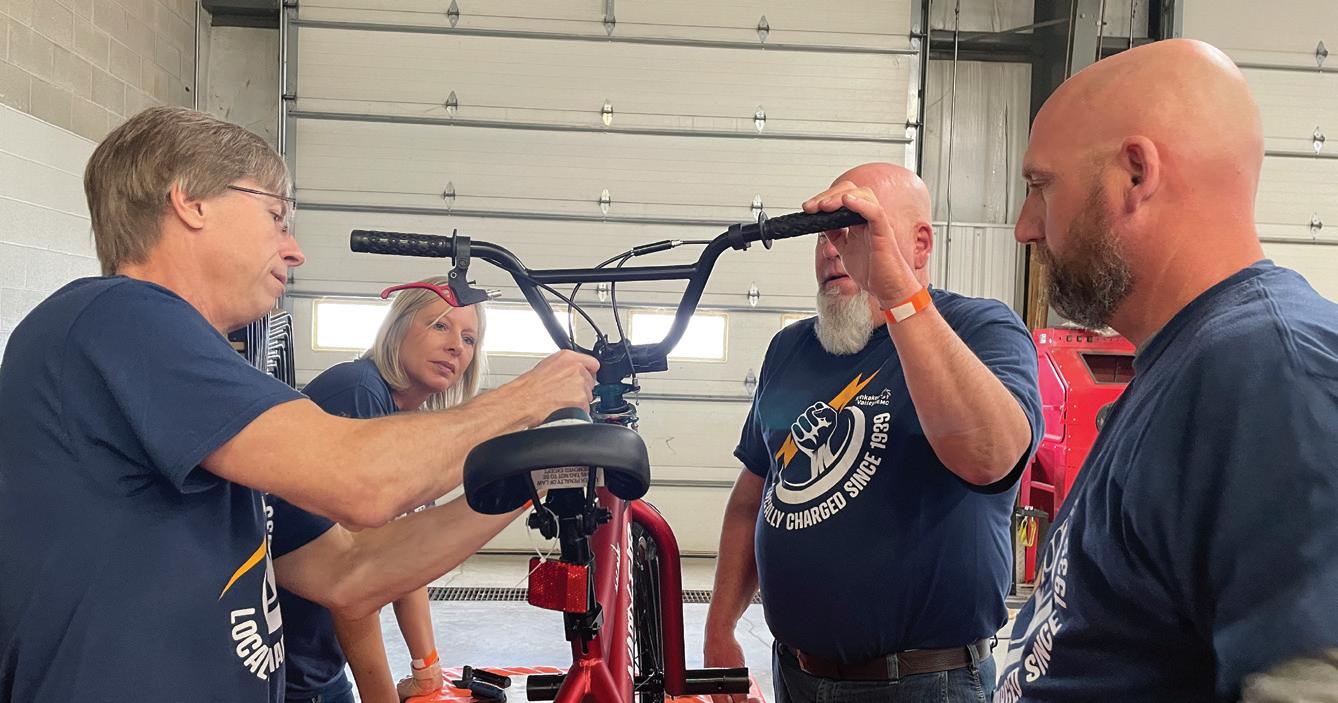
Elections will take place for three open positions on the board of directors. The Kankakee Valley REMC membership will elect a board member from District 3, District 5, and one At-Large Director.
District 3: Lincoln, Johnson, Union, Noble, Pleasant, Washington, Hanna, Prairie, Dewey, New Durham, Clinton, and Cass Townships in LaPorte County and Lincoln and Liberty Townships in St. Joseph County.
District 5: Cass, Rich Grove, Franklin, Tippecanoe, Monroe, White Post, and Jefferson Townships in Pulaski County and California, Jackson, Railroad, and Wayne Townships in Starke County.
The At-Large Position: Any area served by KV REMC.
To be eligible to run for directorship, member-consumers must reside in a township within one of the districts up for election. The At-Large position is open to member-consumers residing in an area KV REMC serves. All candidates are required to attend a mandatory meeting in June. An in-person and virtual option is available for attendees. Director elections will take place at the member appreciation day/annual business meeting in September.




Current participants in
and
and those who switch to a
entered for a chance to win an
. Monthly drawings will take place through June, with one winner selected each month.
Half a mile beneath the icy waters off the coast of Argentina lives one of the most remarkable creatures in the world.
Fully grown, they’re less than 2 feet long and weigh under 10 pounds…
But despite their small size, this strange little squid can have a bigger positive impact on your brain health than any other species on the planet.
They are the single richest source of a vital “brain food” that 250 million Americans are starving for, according to a study published in the British Medical Journal.
It’s a safe, natural compound called DHA – one of the building blocks of your brain. It helps children grow their brains significantly bigger during development. And in adults, it protects brain cells from dying as they get older.
Because DHA is so important, lacking enough of it is not only dangerous to your overall health but could be directly related to your brain shrinking with age.
With more than 16 million Americans suffering from ageassociated cognitive impairment, it’s clear to a top US doctor that’s where the problem lies.
Regenerative medicine specialist Dr. Al Sears, says thankfully, “there’s still hope for seniors. Getting more of this vital brain food can make a life changing difference for your mental clarity, focus, and memory.”
Dr. Sears, a highly-acclaimed, board-certified doctor— who has published more than 500 studies and written 4 bestselling books — says we should be able to get enough DHA in our diets… but we don’t anymore.
“For thousands of years, fish were a great natural source of DHA. But due to industrial fish farming practices, the fish we eat and the fish oils you see at the store are no longer as nutrient-dense as they once were,” he explains.
DHA is backed by hundreds of studies for supporting razor sharp focus, extraordinary mental clarity, and a lightning quick memory… especially in seniors.
So, if you’re struggling with
focus, mental clarity, or memory as you get older…
Dr. Sears recommends a different approach.
Research has shown that our paleo ancestors were able to grow bigger and smarter brains by eating foods rich in one ingredient — DHA.
“Our hippocampus thrives off DHA and grows because of it,” explains Dr. Sears. “Without DHA, our brains would shrink, and our memories would quickly fade.”
A groundbreaking study from the University of Alberta confirmed this. Animals given a diet rich in DHA saw a 29% boost in their hippocampus — the part of the brain responsible for learning and memory. As a result, these animals became smarter.
Another study on more than 1,500 seniors found that those whose brains were deficient in DHA had significantly smaller brains — a characteristic of accelerated aging and weakened memory.
Dr. Sears uncovered that sometime during the 1990s, fish farmers stopped giving their animals a natural, DHA-rich diet and began feeding them a diet that was 70% vegetarian.
“It became expensive for farmers to feed fish what they’d eat in the wild,” explains Dr. Sears. “But in order to produce DHA, fish need to eat a natural, marine diet, like the one they’d eat in the wild.”
“Since fish farmers are depriving these animals of their natural diet, DHA is almost nonexistent in the oils they produce.”
“And since more than 80% of fish oil comes from farms, it’s no wonder the country is experiencing a memory crisis. Most people’s brains are shrinking and they don’t even know it.”
So, what can people do to improve their memory and brain function in the most effective way possible?

Dr. Sears says, “Find a quality DHA supplement that doesn’t come from a farmed source. That will protect your brain cells and the functions they serve well into old age.”
Dr. Sears and his team worked tirelessly for over 2 years developing a unique brain-boosting formula called Omega Rejuvenol
It’s made from the most powerful source of DHA in the ocean, squid and krill — two species that cannot be farmed.
According to Dr. Sears, these are the purest and most potent sources of DHA in the world, because they haven’t been tampered with. “Omega Rejuvenol is sourced from the most sustainable fishery in Antarctica. You won’t find this oil in any stores.”
Already, the formula has sold more than 850,000 bottles. And for a good reason, too. Satisfied customers can’t stop raving about the memory-boosting benefits of quality-sourced DHA oil.
“The first time I took it, I was amazed. The brain fog I struggled with for years was gone within 24 hours. The next day, I woke up with the energy and mental clarity of a new man,” says Owen R.
“I remember what it was like before I started taking Omega Rejuvenol… the lack of focus… the dull moods… the slippery memory… but now my mind is as clear as it’s ever been,” says Estelle H.
“My mood and focus are at an
all-time high. I’ve always had trouble concentrating, and now I think I know why,” raves Bernice J. “The difference that Omega Rejuvenol makes couldn’t be more noticeable.”
And 70-year-old Mark K. says, “My focus and memory are back to age-30 levels.”
These are just a handful of the thousands of reviews Dr. Sears regularly receives thanks to his breakthrough memory formula, Omega Rejuvenol
To secure bottles of this brainbooster, buyers should contact the Sears Health Hotline at 1-800-9668040. “It takes time to manufacture these bottles,” says Dr. Sears. “The Hotline allows us to ship the product directly to customers who need it most.”
Dr. Sears feels so strongly about this product, he is offering a 100%, money-back guarantee on every order. “Send back any used or unused bottles within 90 days and I’ll rush you a refund,” says Dr. Sears.
The Hotline is taking orders for the next 48 hours. After that, the phone number may be shut down to allow for inventory restocking.
Call 1-800-966-8040 to secure your limited supply of Omega Rejuvenol. Readers of this publication immediately qualify for a steep discount, but supplies are limited. To take advantage of this great offer use Promo Code ICOM424 when you call.

When it comes to energy efficiency, the more you know, the better. The Industrial Assessment Center (IAC) at Purdue University in Indianapolis is doing its part to make businesses more knowledgeable.
As one of just 37 IACs on college campuses nationwide and the only one in Indiana, the Department of Energyfunded center has been filling an important role since 2011, approaching 200 energy audits on small- to medium-sized businesses.
The IAC was launched with $1.3 million in Department of Energy funding, has earned two renewal awards since, and was recently given a grant of $100,000 per year over a four-year period to expand energy assessments in a 150-mile radius around the city of Indianapolis.
The IAC program aims to help businesses save energy, improve productivity, and reduce waste by providing no-cost technical assessments from a team of skilled students under the direction of an engineering faculty with energy audit credentials. Taking the lead is Dr. Jie Chen, IAC director and chair of mechanical and energy engineering. These assessments result in recommendations for energy efficiency, potential savings, implementation estimates, and payback times on investments.
That helps connect these small- to medium-sized businesses to the IAC Implementation Grants Program, which offers grant awards of up to $300,000
per manufacturer at a 50% cost share.
These programs, and additional funding from the Bipartisan Infrastructure Law, aim to grow the IAC program to create highquality jobs, a skilled manufacturing workforce, and more competitive U.S. manufacturing. There is plenty more for everyone to know and learn about energy efficiency.
 by David Toll Vice PresidentAdministration and Member Engagement RushShelby Energy
by David Toll Vice PresidentAdministration and Member Engagement RushShelby Energy
PALM
FLORIDA — Millions of Americans take the supplement known as CoQ10. It’s the coenzyme that supercharges the “energy factories” in your cells known as mitochondria But there’s a serious flaw that’s leaving millions unsatisfied.
As you age, your mitochondria break down and fail to produce energy. In a revealing study, a team of researchers showed that 95 percent of the mitochondria in a 90-year-old man were damaged, compared to almost no damage in the mitochondria of a 5-year-old.
Taking CoQ10 alone is not enough to solve this problem. Because as powerful as CoQ10 is, there’s one critical thing it fails to do: it can’t create new mitochondria to replace the ones you lost.
And that’s bad news for Americans all over the country. The loss of cellular energy is a problem for the memory concerns people face as they get older.
“We had no way of replacing lost mitochondria until a recent discovery changed everything,” says Dr. Al Sears, founder and medical director of the Sears Institute for Anti-Aging Medicine in Palm Beach, Florida. “Researchers discovered the only nutrient known to modern science that has the power to trigger the growth of new mitochondria.”
Dr. Sears explains, “This new discovery is so powerful, it can multiply your mitochondria by 55 percent in just a few weeks. That’s the equivalent of restoring decades of lost brain power.”
This exciting nutrient — called PQQ (pyrroloquinoline quinone) — is the driving force behind a revolution in aging. When paired with CoQ10, this dynamic duo has the power to reverse the agerelated memory losses you may have thought were beyond your control.
Dr. Sears pioneered a new formula — called Ultra Accel II — that combines both CoQ10 and PQQ to support maximum cellular energy and the normal growth of new mitochondria. Ultra Accel II is the first of its kind to address both problems and is already creating huge demand.
Over 47 million doses have been shipped to men and women across the country and sales continue to climb for this much sought-after brain fuel. In fact, demand has been so overwhelming that inventories repeatedly sell out. But a closer look at Ultra Accel II reveals there are good reasons why sales are booming.
The medical journal Biochemical Pharmacology reports that PQQ is up to 5,000 times more efficient in sustaining energy production than common antioxidants. With the ability to keep every cell in your body operating at full strength, Ultra Accel II delivers more than just added brain power and a faster memory.
People feel more energetic, more alert, and don’t need naps in the afternoon. The boost in cellular energy generates more power to your heart, lungs, muscles, and more.
“With the PQQ in Ultra Accel, I have energy I never thought possible at my age,” says Colleen R., one of Dr. Sears’s patients. “I’m in my 70s but feel 40 again. I think clearly, move with real energy and sleep like a baby.”
The response has been overwhelmingly positive, and Dr. Sears receives countless emails from his patients and readers. “My patients tell me they feel better than they have in years. This is ideal for people who are feeling old and run down, or for those who feel more forgetful. It surprises many that you can add healthy and productive years to your life simply by taking Ultra Accel II every day.”
You may have seen Dr. Sears on television or read one of his 12 best-selling books. Or you may have seen him speak at the 2016 WPBF 25 Health and Wellness Festival in South Florida, featuring Dr. Oz and special guest Suzanne Somers. Thousands of people attended Dr. Sears’s lecture on anti-aging breakthroughs and waited in line for hours during his book signing at the event.
Ultra Accel II is turning everything we thought we knew about youthful energy on its head. Especially for people over age 50. In less than 30 seconds every morning, you can harness the power of this breakthrough discovery to restore peak energy and your “spark for life.”
So, if you’ve noticed less energy as you’ve gotten older, and you want an easy way to reclaim your youthful edge, this new opportunity will feel like blessed relief.
The secret is the “energy multiplying” molecule that activates a dormant gene in your body that declines with age, which then instructs your cells to pump out fresh

energy from the inside-out. This growth of new “energy factories” in your cells is called mitochondrial biogenesis.
Instead of falling victim to that afternoon slump, you enjoy sharp-as-a-tack focus, memory, and concentration from sunup to sundown. And you get more done in a day than most do in a week. Regardless of how exhausting the world is now.
Dr. Sears reports, “The most rewarding aspect of practicing medicine is watching my patients get the joy back in their lives. Ultra Accel II sends a wake-up call to every cell in their bodies… And they actually feel young again.”
And his patients agree. “I noticed a difference within a few days,” says Jerry from Ft. Pierce, Florida. “My endurance has almost doubled, and I feel it mentally, too. There’s a clarity and sense of wellbeing in my life that I’ve never experienced before.”
This is the official nationwide release of Ultra Accel II in the United States. And so, the company is offering a special discount supply to anyone who calls during the official launch.
An Order Hotline has been set up for local readers to call. This gives everyone an equal chance to try Ultra Accel II. And your order is backed up by a no-hassle, 90day money back guarantee. No questions asked.
Starting at 7:00 AM today, the discount offer will be available for a limited time only. All you have to do is call TOLL FREE 1-888-548-3713 right now and use promo code ICUA424 to secure your own supply.
Important: Due to Ultra Accel II recent media exposure, phone lines are often busy. If you call and do not immediately get through, please be patient and call back.
Located between the Wabash River and the Illinois state border, Vermillion County was Indiana’s 50th official county. It is adjacent to Illinois’ own Vermilion County, making it one of 11 counties in the U.S. bordering a county with the same name in another state. Clinton, Indiana, is Vermillion County’s largest city. A bronze statue called “The Voice of the Immigrant” pays tribute to Clinton’s Italian immigrants who worked as coal miners in the 1800s.
American journalist Ernie Pyle was born in Dana, Indiana, in 1900. Pyle attended Indiana University, where he worked for the university’s student-run newspaper. He left school before graduating to pursue reporting jobs at multiple newspapers. Pyle traveled across the U.S. as a human-interest reporter before he became known for writing about American soldiers serving in World War II, capturing their everyday lives on the front lines in North Africa, Italy, and Normandy, France. He received the Pulitzer Prize for his first-person perspective writing about these infantry soldiers. Pyle died while covering the Battle of Okinawa in April 1945. To honor his work, Pyle’s childhood home in Dana was restored into the Ernie Pyle World War II Museum.
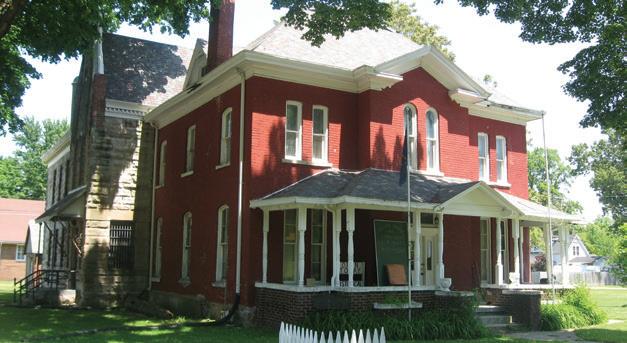
The Vermillion County Jail is a historic location in Newport, Indiana, for visitors to sightsee. In 1868, the prison’s two-story sheriff’s residence was built in the Italianate style with projecting eaves, corbels, and a steep hipped roof. In 1896, architect John W. Gaddis from Vincennes designed the prison’s additional jail block in the Romanesque Revival style with rusticated limestone. The prison closed in 1992, and it became another one of Gaddis’ designs added to the National Register of Historic Places in 1999. Now, visitors can explore the jail’s museum of preserved Vermillion County newspapers and other historical items.
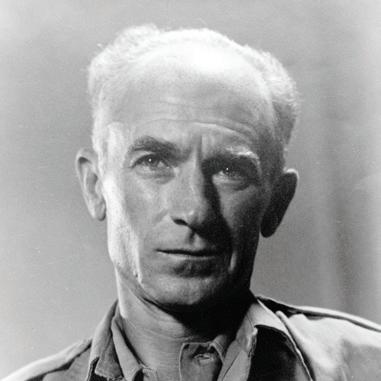

Held each Labor Day weekend since 1966, the Little Italy Festival celebrates the Italian heritage of Clinton’s residents. From Friday to Monday, more than 250,000 attendees enjoy classic fair rides, a bocce ball tournament, and Italian foods, such as cannoli, mostaccioli, and Italian cream cake. There are also pizza-eating and spaghettieating contests. The festival’s most popular activity is its grape stomp, a traditional wine-making method where participants crush grapes with their bare feet.
FOUNDED: 1824
NAMED FOR: the Vermillion River
POPULATION: 15,439
COUNTY SEAT: Newport
INDIANA COUNTY NUMBER: 83
Newport
Dana Clinton
In the July issue of Indiana Connection, we want to celebrate America by highlighting our readers’ 4th of July traditions and memories. Does your family have a favorite firework spot or a special meal eaten every Independence Day? Tell us about it! Submit entries by mail to our office (8888 Keystone Crossing, Suite 1600, Indianapolis, IN 46240) or at indianaconnection.org/share-your-4th-of-july-traditions by May 24.
Our Marketplace offers maximum exposure for your business or organization at a minimal cost.
Please contact Cheryl Solomon, 847-749-4875 or cheryl@amp.coop, for other small business advertising opportunities in Indiana Connection.




We

Bloomington restaurant known for some of the finest steaks in the Midwest, seafood, an extensive wine list, and more
Under a red-and-white striped awning on West 6th Street sits a longtime Bloomington staple. Janko’s Little Zagreb, which boasts “world-famous steaks in the heart of downtown Bloomington,” is known as one of the best steakhouses in the Midwest.
It started as a place “to make sandwiches for friends after long nights out on the town in Bloomington in the ‘70s,” said Owner and President Mark Conlin. “One thing led to another, and Little Zagreb was founded, and the steakhouse was born. The rest is history.”
The steakhouse was founded by John “Janko” Pouch in 1973. “His family came over to this country from Yugoslavia, and his grandmother would call him Janko, which means little John,” said Conlin.
Over the years, guests have ranged from Bloomington locals to music celebrities John Mellencamp and Billy Joel — who referenced Little Zagreb’s as the “best-tasting steak I ever ate in my life” in a 2008 Rock and Roll Hall of Fame induction ceremony speech.
“One of my favorite parts of our restaurant is talking to the people who
dine with us from different parts of the country and asking how their dining experience was,” said Conlin.
The restaurant is known for its hand-cut steaks and famous spicy meatballs but also offers seafood and vegetarian options.
Conlin said the restaurant is iconic, renowned as one of the finest steakhouses in the Midwest, and known for its steaks, seafood, and one of Indiana's most comprehensive wine lists.
“My passion is wine and the extensive list we have built,” he said.
His personal menu favorites include the fresh Colorado lamb chops, king crab legs, and “our fan-favorite meatballs Bucharest.”
Janko’s Little Zagreb is located at 223 W. 6th Street in Bloomington. The restaurant is open from 5 to 9 p.m. Tuesday through Thursday and 4:30 to 9 p.m. on Friday and Saturday. It accepts reservations each evening and walk-ins based on availability. Learn more at littlezagreb.com.
Jenna Williams is a freelance writer from Indianapolis.

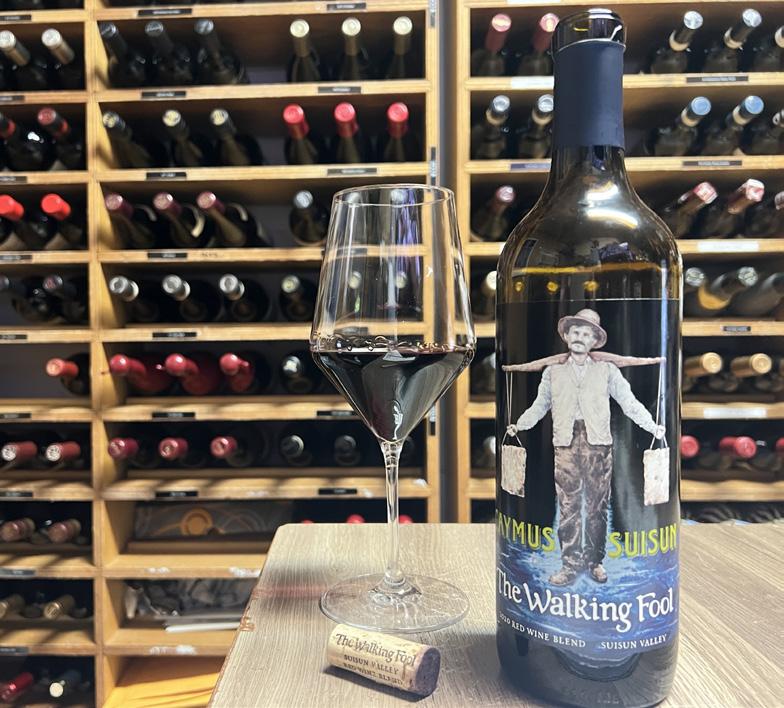
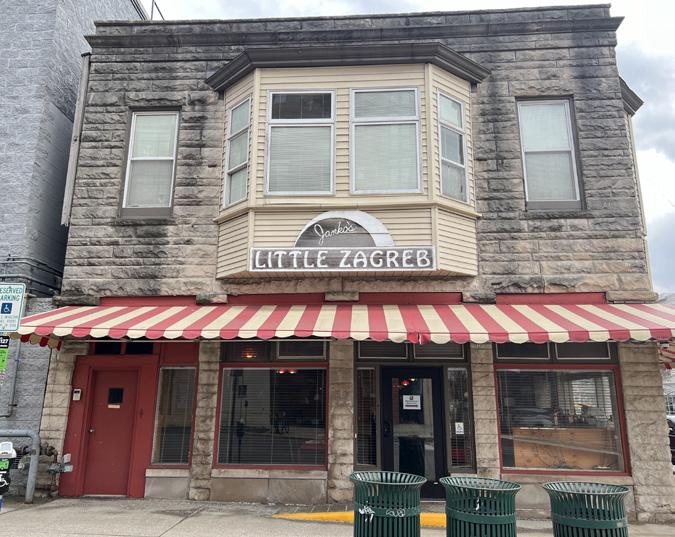










Spring brings babes to barnyards and buds to tree branches. But it also can bring powerful storms causing widespread damage and even death. In the past five years, from 2018 through 2022, Indiana had 40 deaths, 38 injuries and almost $113 million in property and crop damage from weather events in Indiana alone, according to the National Weather Service.
Weather disasters can occur yearround, but most of the worst storms Indiana receives come in the spring.
“While not all damage can be prevented, being prepared can minimize damage and reduce injury or death,” said Jon Elkins, vice president of safety, training and compliance at Indiana Electric Cooperatives.
Here are some tips for staying safe before and after a storm hits.
Keep your phone charged and consider getting an external battery so your phone can charge without electricity.
Have a battery-operated radio for weather updates.
Unplug appliances and other electrical items. Damage can occur from power surges as a result of nearby lightning strikes.
Prepare an emergency kit and create a family communication plan.
If someone in your home uses a life-sustaining medical device that requires electricity, alert your electric cooperative now. Plan to have a battery or emergency generator on hand before an outage occurs.
If you see fallen power lines while driving, turn around — never drive over them.
If a power line falls on your vehicle, stay inside, call 911, and exit only if your life is in immediate danger from a fire or other reason. Then, jump clear of your vehicle being certain to never touch the vehicle and the ground at the same time; then shuffle away keeping your feet together at all times. While checking for damage outside your home, watch for hazards from exposed nails, broken glass, and broken tree branches dangling on other limbs.
Use flashlights, not candles, to inspect your home during a power outage to prevent fire risks.
Don't touch downed power lines or anything in contact with them. Call 911 to report them, as they could still be energized.
If spring comes in like a lion instead of a lamb, know how to keep yourself, your family and your property safe from harm during a severe storm.
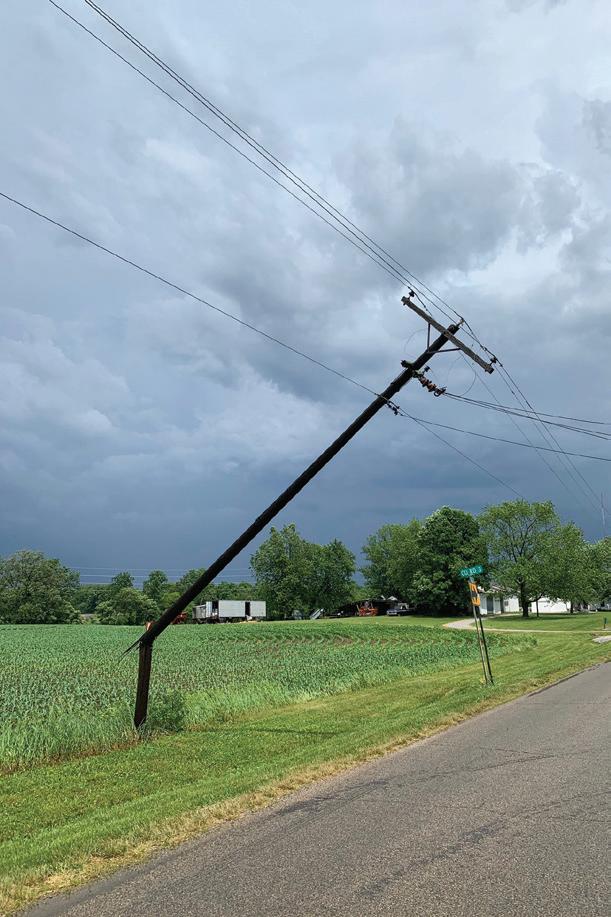


What’s a vegetable that ups the impact of any dish and is good for you, too? Garlic! Try out these garlic recipes for a burst of flavor, and some added health benefits. Just don’t forget your after-dinner mint.
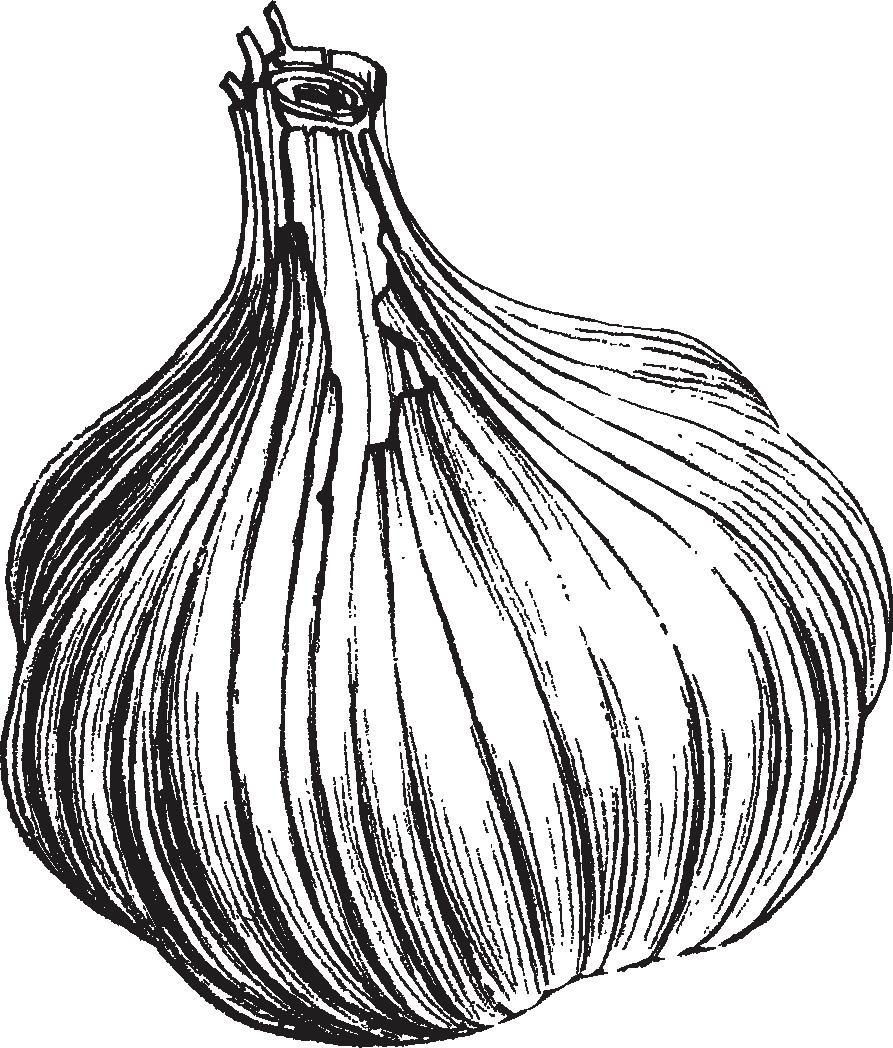

Kayla Knepp, Montgomery, Indiana
6 chicken thighs
2 cloves garlic
2 Tbsp olive oil
1 Tbsp ranch dressing mix
1 lb. red potatoes
1 bunch broccoli
2 Tbsp olive oil
1 ⁄4 tsp red chili flakes
1 ⁄ 2 cup Parmesan cheese
Salt and pepper to taste
Half a lemon, juiced
Preheat oven to 400 F. In a large bowl, add the chicken thighs, garlic, and olive oil. Season the chicken with the salt, pepper, and ranch mix, and toss to coat the chicken evenly. Place on one side of a baking sheet. In a separate bowl, add potatoes and broccoli. Drizzle with olive oil and season with salt, pepper, and red chili flakes. Toss to combine and place the vegetables on the other side of the baking sheet. Roast for 25-30 minutes until the chicken is golden brown and a meat thermometer registers 165 F. Flip the vegetables halfway through roasting. After roasting, toss the potatoes and broccoli with parmesan and a squeeze of lemon juice.

Marilles Mauer, Greensburg, Indiana
1 cup shredded zucchini, drained well
1 clove garlic, finely grated
1 ⁄ 3 cup breadcrumbs
1 ⁄4 cup grated
Parmesan cheese
1 large egg
1 Tbsp dried chives
1 ⁄ 2 Tbsp dried parsley
1 ⁄ 2 tsp dried basil
1 ⁄ 2 tsp dried oregano
Pinch of salt and pepper
Preheat the oven to 400 F. Lightly coat a baking sheet with olive oil or non-stick spray and set it aside. Grate zucchini into a clean towel. Roll up the towel and twist to wring out moisture. Grate the garlic. Add zucchini, garlic, egg, breadcrumbs, Parmesan, and spices to a medium bowl. Mix well to combine. Shape a tablespoon of the mixture into your hands, roll it into a small ball, and place it on the baking sheet. Bake for 15-18 minutes in the oven. Serve warm with marinara or tomato sauce. (Recipe makes 16 bites.)


Laura Garza, Beech Grove, Indiana
1 lb. large shrimp, deveined and patted dry (can be shelled or unshelled)
1 ⁄ 2 cup butter
1 ⁄4 cup extra virgin olive oil
1 head of garlic, peeled and finely chopped
3⁄4 cup all-purpose flour
2 Tbsp paprika
1 ⁄ 2 tsp cayenne pepper
1 tsp salt
1 lemon cut into wedges
Prepare the shrimp by deveining and rinsing them in cold water, then lightly patting them dry. Combine the flour, paprika, and cayenne pepper in a bowl and toss the shrimp in the mixture until well-coated. Heat a large skillet over low heat. Add the butter, oil, and garlic and cook for 3-5 minutes until garlic is lightly browned. Raise the heat to medium and add the shrimp in a single layer. Cook for 3-4 minutes, then turn and cook on the other side for 3-4 minutes. Add salt, cook for another minute, then squeeze fresh lemon juice over the shrimp. Serve immediately. (Recipe makes 12-15 shrimp.)
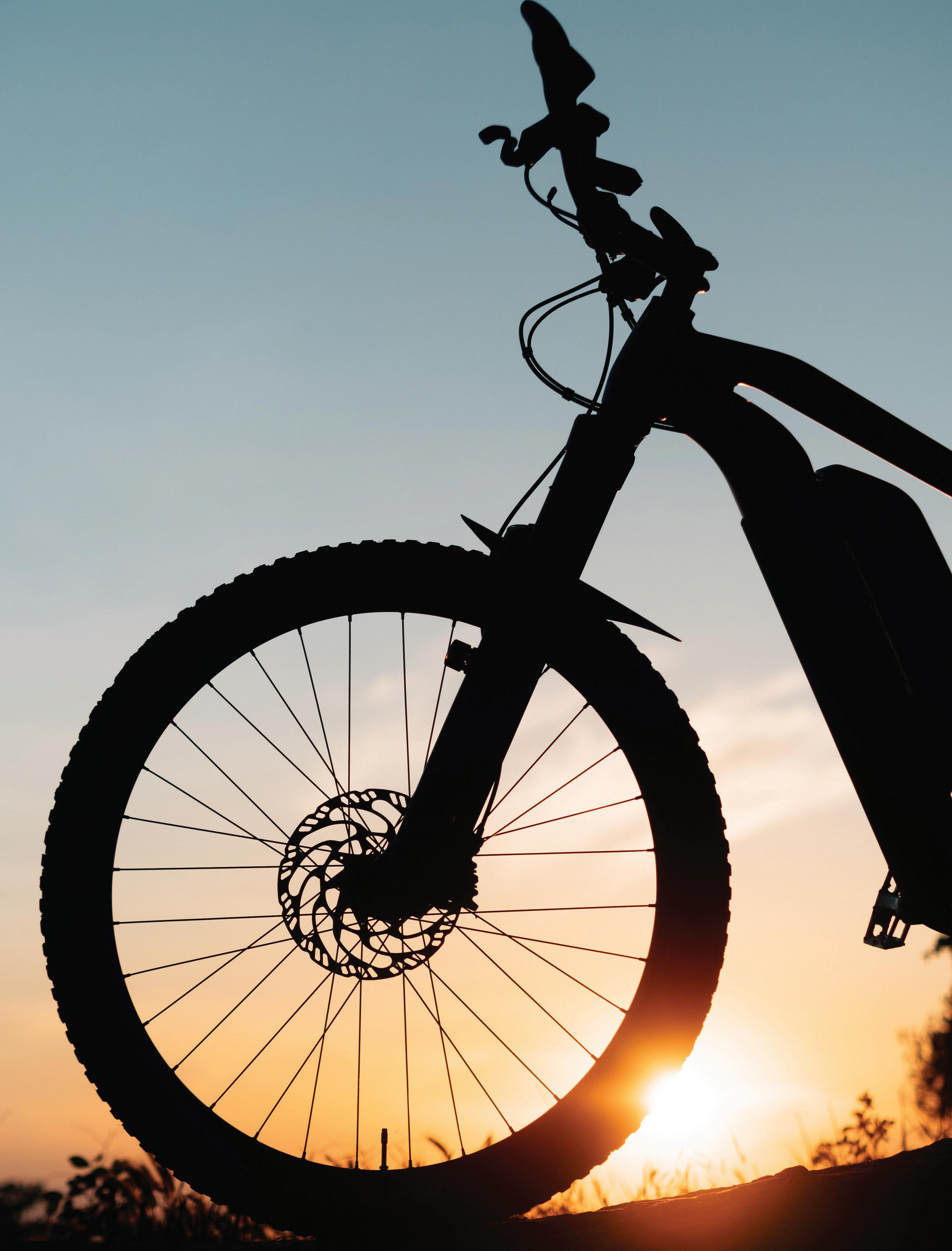 BY BRIAN D. SMITH
BY BRIAN D. SMITH
Electric bikes are becoming more popular as people find new ways to exercise or reduce their carbon footprint. Read on to learn how they work and whether an e-bike suits your lifestyle.
Electric bicycles may seem like a 21st-century phenomenon, but in fact, the first e-bike patent was granted in the ’90s — the 1890s. That’s right: On the last day of 1895, a Canton, Ohio, man named Ogden Bolton Jr. received a patent for an “electrical bicycle” powered by a 10volt battery. Bolton’s invention, while described by electricbike.com as looking “surprisingly modern” for its age, nevertheless lacked one feature that today’s cyclists tend to expect — pedals.
Even so, Bolton provided a peek into a future that would take more than a century to materialize. Not until the 1990s did interest in “electrical bicycles” resume in earnest, and between 2018 and 2022, e-bike sales in the United States nearly quadrupled, from 287,000 to 1.1 million, notes market research company Circana. The e-bike boom is resounding even louder overseas. In a $35 billion world market, China claims a nearly $11 billion share, and Germany $8 billion, compared to the United States’ $3.4 billion, according to Mordor Intelligence statistics.
Here in Indiana, e-bikes are wheeling their way into the local lifestyle. Order a Domino’s Pizza in Bloomington, and it might come on a motorized bicycle ridden by a so-called “Electric Bike Delivery Expert.” Grab lunch at Upland Brewery Co. in Jeffersonville, and you can rent an e-bike without ever leaving the building. Take a stroll on an Allen County hiking trail, and you may find it patrolled by an officer on an electric bicycle manufactured by Recon Power Bikes of Fort Wayne.
Not to mention the burgeoning number of everyday Hoosiers for whom the “E” in e-bikes stands for errands, exercise, enjoyment, and an easier commute to the office.
It’s also the first letter in “enigma,” which describes the perception of many non-cyclists who have never
seen, let alone ridden on one. For the uninitiated, E-bikes 101 is now in session.
The e-bike is a bicycle equipped with an electric motor and one or both of two propulsion modes: pedal assist and throttle.
Pedal assist adds punch to each push of a pedal. “Pedal assist means no assistance from the motor unless you pedal, which amplifies your power. The motor is connected to your pedal,” said Rob Ling, mechanic for Gray Goat Bicycle Co., which has three locations in the Indianapolis area.
Pedal-assist settings such as Eco, Trail, and Turbo (some models offer five, seven, and even nine choices) enable you to adjust your level of electrified oomph. The higher modes boost your speed and allow you to surmount steeper inclines with
increasing ease. If you haven’t ridden a bike since you passed driver’s ed, the assist feature may inspire you to shout, “Power to the pedal!”
The throttle delivers a more immediate kick, propelling the bike forward without the rider needing to pedal. But not too fast forward. The maximum speed of e-bikes is not only limited but also regulated. The 3-Class System, devised a decade ago and cited in Indiana law, divides e-bikes into three categories:
• Class 1: Pedal assist only, with no throttle and a maximum assisted speed of 20 mph. This is the most common type of e-bike.
• Class 2: Throttle-assisted, also with a maximum assisted speed of 20 mph.
• Class 3: Pedal assist, with no throttle and a maximum assisted speed of 28 mph.
continued on page 22

continued from page 21
Here’s where we get involved with the law. Considering that most e-bikes cost anywhere from $800 to $10,000, it’s natural to wonder how much insurance you’re required to buy, where you get a license and registration, and whether you can drive it on state park trails.
Now for the good news — at least if your bike is a Class 1 or 2. To quote the Indiana Code: “An electric bicycle is not a motor vehicle … An electric bicycle shall be regulated as a bicycle.”
Does this mean you don’t need insurance, a license, or registration?
Yes, the operator of an electric bicycle is not required to have a driver’s license or liability coverage. As for those park trails: “Class 1 or Class 2 electric bicycles may be operated on any bicycle path or multipurpose path where bicycles are permitted.”
So there you have it, straight from our elected legislators: A bike is a bike is a bike. The motor doesn’t matter. But do you even need one?
After all, the basic bicycle has been around for 200 years, and you will burn more calories if techno-wizardry isn’t doing half the pedaling. You can’t blame a seasoned rider for decrying the pedal assist and throttle as unneeded at best and cheating at worst.
However, the target audience for e-bikes is not the U.S. Olympic Cycling Team. “Some people are just starting back into being active,” explained Ling. “Some people have a spouse who’s a hardcore cyclist, and they want to ride together, but the other one can’t keep up.”
Yet another group includes office workers who don’t want to arrive at their jobs bearing the residue of a heavy summer workout. “Not a lot of employers have shower facilities,”

he said. Even members of northern Indiana’s Amish community have taken to e-bikes, said Max Hall, a mechanic for Pumpkinvine Cyclery of Middlebury. Some Amish use solar panels to recharge their batteries.
It’s worth noting that the e-bike isn’t always competing with the regular bike — sometimes, it competes with the automobile. Whether their motives are ecological or economical, owners of electric bicycles can find plenty of reasons to advocate for power.
If you’re seeking transitions from carbon emissions, you will relish the e-bike battery’s zero output, a dramatic decrease from the 4.6 metric tons of CO2 that a typical passenger car discharges each year.
If you’re a cash-conscious consumer, you’ll appreciate paying about a dime or less for each battery recharge, generally a 4- to 6-hour process that will grant you a fresh 30 to 50 miles of fossil-free travel (your mileage may vary).
Of course, you won’t ride your e-bike every day in Indiana — extreme cold, heavy snow, hail, and thunderstorms might prompt a reintroduction to
internal combustion. But if you usually fill up your tank once a week, you probably spend about $2,000 to $2,500 per year on fuel costs. Every week you are able to drain your e-bike battery instead of your gas tank is almost like finding a $50 bill (or at least two twenties) in your glove compartment.
It would seem obvious that e-bike riders burn fewer calories than regular cyclists — about 20 to 30 percent, studies confirm. However, further research by the International Journal of Behavioral Nutrition and Physical Activity found that e-bike enthusiasts spent more time riding and covered more distance than traditional cyclists, resulting in more overall physical activity.
And it’s not as if every e-biker deserves the label of American idle. Joe Hettle of Brownsburg, 76, was an avid rider for decades until 2015 when the Vietnam veteran encountered an enemy he couldn’t vanquish — an array of health woes stemming in part from his exposure to Agent Orange.
continued on page 24
PEDAL ASSIST
• The motor is connected to the pedal. There is no assistance from the motor unless the bike is pedaled.
• Settings such as Eco, Trail, and Turbo (some models offer five, seven, and even nine choices) enable you to adjust your level of electrified oomph.
$800 to $10,000
THROTTLE
Delivers a more immediate kick, propelling the bike forward without the rider needing to pedal.
Pedal assist only, with no throttle and a maximum assisted speed of 20 mph. This is the most common type of e-bike.
Throttle-assisted, also with a maximum assisted speed of 20 mph.
• One charge generally takes 4 to 6 hours
• 30 to 50 miles of travel from one charge (mileage may vary)
CLASS 3
Pedal assist, with no throttle and a maximum assisted speed of 28 mph.
• E-bikes emit no carbon emissions.
• A typical passenger car discharges 4.6 metric tons of CO2 a year.
continued from page 22
A veteran cyclist who had organized bike rides and lectures for the Central Indiana Bicycling Association, Hettle suddenly discovered he could no longer keep up with the pack. The moment of truth came when he entered a race and finished with a result that, under normal circumstances, would have been embarrassing. “Out of over 100 riders,” he recalled, “I was the last one in.”
The circumstances, however, were anything but normal. In the years since, Hettle has been diagnosed with emphysema, asthma, coronary artery disease, and two forms of cancer. He compares his lung problems to “holding your nose, putting a McDonald’s straw in your mouth and trying to breathe.”
The timing of the e-bike’s availability in Indianapolis couldn’t have been better for Hettle. Faced with the prospect of parking his bicycle permanently, he went to a local bike shop and learned that electric models had hit the market but weren’t yet obtainable in Indy. Rather than cool his active heels, he told the shop, “If you order it in and I can’t ride it, I’ll pay the return shipping.”
Hettle got his e-bike — and has since ridden it more than 30,000 miles. “I’ve not had anybody tell me, ‘You can’t ride here,’” he said. “I bought it so I could keep up with my friends, not go faster.”
Down on the Ohio River, Grace Washburn sees plenty of friends riding e-bikes for the first time together as rental clients of The Bicycle Station. Her bike shop offers easy access to the 7.5-mile Ohio River Greenway, and it never hurts to be located within Upland Brewery.
“A lot of people will come over here after having lunch or brunch,” said Washburn, business development manager and a former Indiana University Women’s Little 500
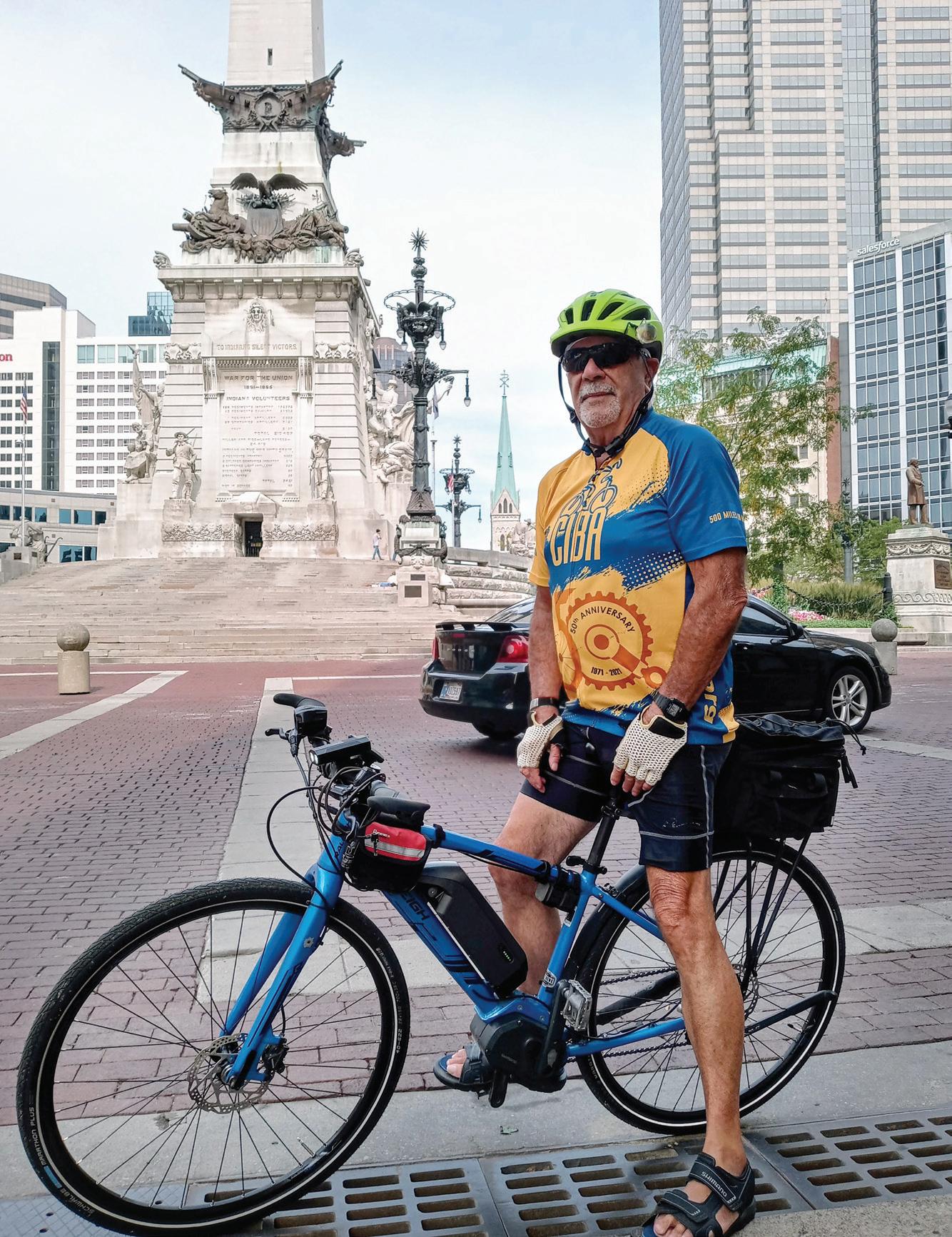
After a number of health issues, Joe Hettle thought his days as an avid biker were over. With his electric bike, he is able to stay active and continue his passion.
championship team member. “You can take the bikes over the pedestrian bridge and go into Louisville.”
The Bicycle Station, located in Jeffersonville and Columbus, is among an assortment of bike shops across the state that rent e-bikes. Besides catering to tourists, they give potential e-bike buyers the opportunity to take the electric twowheeler on the road for an hour or even a full day rather than giving it an abbreviated test drive.
Just remember that if you get a bit reckless on your rented e-bike, you may someday find yourself getting
pulled over by the lights and siren of … another e-bike, likely assembled in Fort Wayne. Recon Power Bikes is the leading supplier of e-bikes for law enforcement. It sells its “military tough” products to police departments in all 50 states, federal agencies ranging from the U.S. Fish and Wildlife Service to the FBI, campus cops, and even the U.S. Army and U.S. Air Force.
“From day one, we designed and marketed to law enforcement,” said Tim Burns, sales and dealer development manager. Recon representatives would rent a booth at the International Association of Chiefs of Police Annual Conference and Exposition. The Fort Wayne e-bikes add a new dimension to traditional
police bike patrols, allowing officers to stay fresher and move faster to trouble spots when necessary.
A contract with the FBI in 2019 was “the turning point for us as a company,” Burns said. In late 2022, Recon joined forces with GMC to create an all-wheel-drive Hummer electric bike featuring twin motors, puncture-resistant 4-inch tires, and ride modes called Cruise, Traction, and Adrenaline. Like other Recon e-bikes, it’s built to handle everything from deep snow and sand to concrete curbs and stairs.
In the company’s backyard, the Allen County Sheriff’s Department is constructing what Recon founder Jeff Fuze called the “first e-bike law enforcement training facility in the world” on the 200-acre sheriff’s department regional training site in southeast Fort Wayne.
But Recon isn’t all blue and green — civilians are welcome to mobilize a line of e-bikes with names like Sortie
and Commando. Prices range from about $2,000 to $4,000.
Should everyone own an electric bike? The charged debate rolls on.
Longtime cyclist Hettle doesn’t think so. “If you’re healthy, you don’t need an e-bike,” he said. “But if you have health issues, step up and get one.”
Not that he considers his own e-bike anything less than the regular bicycles he used to be able to ride. “As long as I have to pedal it,” said Hettle, “it’s a bicycle.”
But in a near-radical counterpoint to the electric vehicle movement, an Outside magazine article argues that not only are e-bikes worth buying — they are worth buying instead of electric cars.
“Whatever your goal — to save money, the planet, or your sanity and health,” wrote Joe Lindsey,






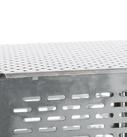


















“the EV that will change your life isn’t a car, truck, or SUV. It’s an e-bike … I’m saying keep your old car, get an e-bike, and use it to replace car trips…The addition of lightweight electric motor-assist is the secret sauce that transforms the e-bike experience … E-bikes shrink distances and flatten hills.”
All of this is not to say that everyone should rush right out and buy an e-bike. They’re not inexpensive, and depending on your location, they may or may not add convenience to your life. But whatever you do, know what you really want.
Burns recalled a man who entered his company’s showroom one day and, as the conversation turned to e-bikes, began describing his dream two-wheeler: “I want a bike that’ll go 50 miles an hour and not have to pedal it.”
Said Burns: “Then you need to buy a motorcycle.”








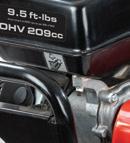
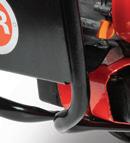



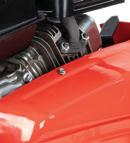
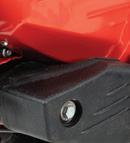




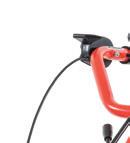











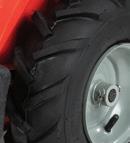



































When Mike Sheets returned to his hometown in Newton County after playing college football, he would tell folks who asked about his career that he was a lineman — “but not for the Chicago Bears.”
After following in his father’s shoes as an electrician, he joined Newton County REMC. He became a lineman, all right — the kind who works on power lines on the electric grid, not defending or sacking quarterbacks on the gridiron. Twenty-three years later, Sheets still gets down in the trenches and up on the poles doing linework with the crew, but as Newton’s line superintendent, he’s now also drawing up the Xs and Os. He designs and calls the plays, as it were, staking and building the co-op’s electrical system and keeping it running.
Growing up in Goodland, Sheets began helping his dad on job sites, pulling wires, and hooking up wires when he was in his teens. After getting a degree in sociology while playing football, he returned to Goodland, unsure of what he wanted to do. He worked with his dad. Then, in 2000, Sheets found an REMC job application underneath his car’s windshield wiper. From working at construction sites, he got to know some of the co-op employees. He also knew
its general manager at the time from playing in various sports leagues in the area.
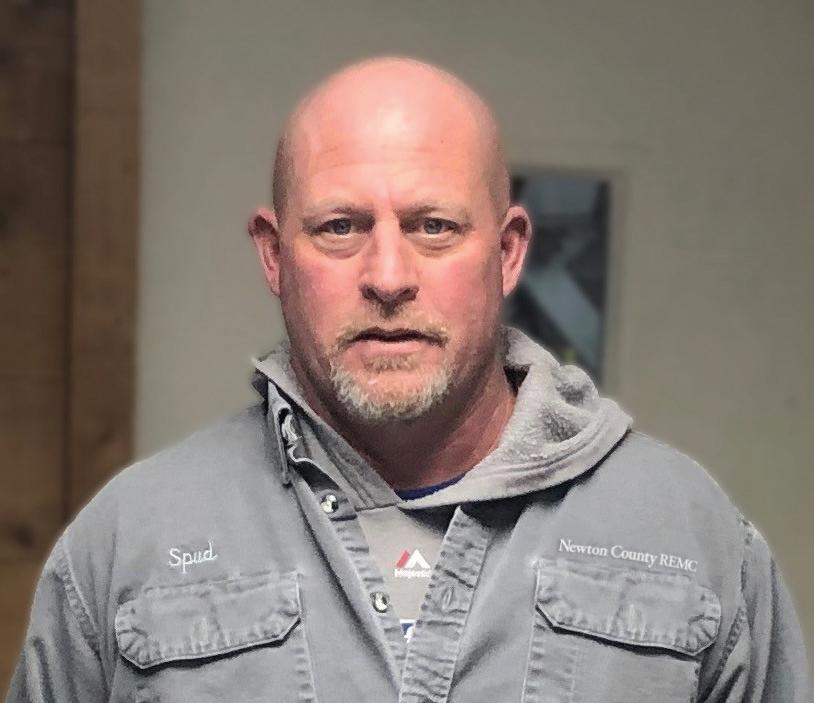
The manager was persistent in his recruiting and called him and asked when he could come in for an interview. They set up a time. On the day of the interview, he was at a muddy job site with his dad’s crew and had to stay late to help them get out of the mud. “So, I showed up in work clothes, probably an hour or so late, and didn’t have the application filled out. We filled out the application while we were sitting there talking. He pretty much said, ‘Well, when can you start?’”
As a certified electrician, Sheets hit the ground running, doing what he already knew how to do, and he began the four-year apprentice lineman training.
“It was definitely challenging,” he said, “because, at that time, Newton County REMC had never had an apprentice go through the entire apprenticeship program. I was the first. I didn’t know what to expect because nobody here had done it.”
At the time, the REMC had only three linemen. Today, the co-op still has just three linemen, but it also has three apprentices, who will be doubling the crew in the coming years.
Having a small team keeps the job interesting with unique challenges. “Every day is something different,” Sheets said. “We’re learning every day, including me, and I’ve been here a long time.”
Sheets is proud and glad he came home. “It’s a great career. I have a second-to-none retirement program, and it’s just been nice. I know probably 90% of our customers and 90% of the people around this area. They watched me play football and grow up. And I’ve known them my entire life, lots of good friends and good customers. We have been around each other our whole lives.”
INTERESTED IN AN ELECTRIC CO-OP CAREER?







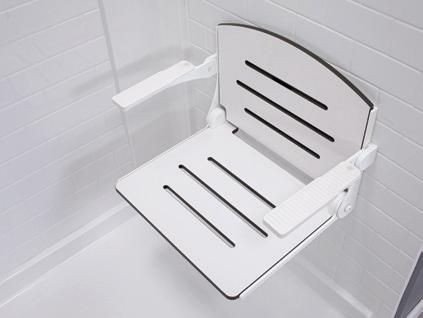


Planning to save energy during severe weather can keep you comfortable while helping the environment — and even lead to savings in your wallet.
People know the basic rules of supply and demand — price typically goes up when demand goes up. The same goes for electricity; wholesale electricity prices can soar when everyone runs their A/C on a hot summer afternoon or the heating system on a frigid winter day. You may not see these price differences on your home’s energy bill because your electric co-op may average these costs into one amount per kilowatthour (kWh). Yet, eventually, highdemand days can lead to higher costs for everyone.
Your local electric cooperative is part of a complex system that must be prepared to meet the highest power demands put on the energy grid. This is similar to how a big box store parking lot may seem larger than needed. On most days, many spots are empty. Yet the parking lot may be jam-packed on the day after Thanksgiving, the year’s busiest shopping day. Your electric co-op has to build or buy enough capacity to fulfill everyone’s needs on those hottest and coldest days of the year.
Many co-ops offer advice and programs to limit the peak demand during those days of extreme temperatures and energy use. Options for homeowners can include load management programs for different devices, such as air conditioners and water heaters, to shift energy use to times when electricity is in less demand. By doing this, your electric cooperative and Wabash Valley Power Alliance — your co-op’s wholesale power provider — can avoid building new power plants or purchasing energy on the market. This saves money for everyone.
You can contact your local electric co-op’s energy advisor for information on resources available to help you lower your home’s energy use. Your co-op may even offer programs and rebates for you to help keep a lid on long-term energy costs. Everyone has a role in reducing long-term energy costs for the local electric cooperative — which, in turn, also minimizes the expenses you will have to pay in the future. Call your local electric co-op for details, and you can visit PowerMoves.com for energysaving tips and advice.


Nearly three years ago, KV REMC initiated a project to link its headquarters and substations with a fiber ring, uncovering an opportunity to propel communities into the digital age. The fiber ring project, nearing completion, presents a chance for Surf Internet and other providers to collaborate in designing a fiber-optic broadband network across the KV REMC service area.
Recognizing the expense and time required to bring broadband to rural communities, Surf CEO Gene Cruise emphasizes the

DRAWING THREE WINNERS
$75, $50, $25
Each month, one name will be drawn for each dollar amount. The winners will receive a bill credit on their next electric bill.
Mail your answers to: KV REMC, Attn: Quiz Corner, P.O. Box 157, Wanatah, IN 46390 or visit kvremc.com
importance of community voices and encourages residents to apply to the Indiana Connectivity Program (ICP). This statewide initiative assists in connecting underserved areas by facilitating collaboration between residents, service providers, and the state.
With the KV REMC fiber ring project, Surf is strategically leveraging available funding mechanisms, including using electrical system poles offered by KV REMC. The focus is connecting as many rural residents as possible, with Surf identifying homes for private
funding and encouraging ICP applications for those in more expensive-to-reach areas.
Surf's proactive approach involves comparing potential fiber-optic routes with grant databases, engaging with local officials for funding opportunities, and urging residents in underserved areas to apply to the ICP through surfinternet.com/icp . Together, KV REMC and Surf Internet aim to bridge the digital divide and bring transformative high-speed internet to rural communities.
DEADLINE TO SUBMIT ANSWERS IS TUESDAY, APRIL 16.
u What two events take place in April that call attention to the critical work co-op employees perform?
Hint: CEO article
v What did the employees of the co-op build as part of a team building activity?
w Name one legislator that the Junior Board met during a trip to the Statehouse.
Name: KV REMC Account No.

If you have never grown a vegetable in a garden or a pot, now is the time. Here are three that are easy and yummy.

Bauer oakleaf lettuce, a 2022 AllAmerica Selection, grows in a tight rosette head that is as beautiful as it is delicious. The lettuce is dark green, and the head is compact. The tidiness of bauer makes it an excellent edible ornamental for containers or window boxes. It can also be planted in the ground. Sow seeds directly outdoors or start them indoors to transplant them outside. It grows in part sun to full sun. Keep the soil moist but not wet.
To harvest bauer, snip off young individual leaves in the morning. Rinse, dry, wrap in a dampened paper towel, store a loose plastic bag, and place in the refrigerator. If you have a salad spinner, use that to wash and rinse the lettuce, which can be stored in the spinner. The lettuce you pick and wash in the morning will be perfect for sandwiches or salads.

Shallots, a member of the onion family, can be pricey in the grocery store. Enter Echalion Crème Brulee. Sometimes called banana shallot, echalion is a cross of an onion and shallot. The result is a 4-inch oblong shallot with pink skins that are easy to peel. The color doesn’t stop there. Crème Brulee’s inner rings are also pink.
A 2021 All-America Selection, Crème Brulee can be grown from seed in containers or the garden. Sow seeds directly outdoors in a sunny location. Keep the soil moist but not wet.
To harvest, pull the shallots about 100 days after planting. If the shallot seems small, allow the plants to continue growing. Once gathered, allow the plants to cure in the sun for about 10 days. When dry, remove the tops and store the onions in a cool, dry place. Caramelize the shallots for an even sweeter treat.

Carrots are hard for many Hoosiers to grow because Indiana’s soil is typically clay. Carrots’ long, tapered roots can be stunted or misshapen when they hit heavy clay or hardpan soil. This veggie can be grown in spring through summer and into fall. Short stuff carrots are perfect for containers or growing in lessthan-perfect soil. They are short, about 4 inches long, and fat — a great size for roasting. Sow seeds directly outdoors in pots or in the ground. Keep the soil moist but not wet.
After about 75 days, pull short stuff carrots from the ground. If it looks fully developed, harvest more. If it seems underdeveloped, allow the plants to grow another week or two. Clean the harvested carrots when you are ready to use them. You can leave the tops on or cut them off. Store in a cool, dry place.
Busy dreaming of your spring projects? Contacting 811 is just the beginning.
Digging with care is just as important as contacting 811. The tolerance zone is an area where special care must be taken to dig near a buried utility. Regulations mandate a two-foot tolerance zone on either side of the marks on the ground and all around the utility itself.
If you can’t avoid digging near the paint or flags on the ground indicating a utility is present, it’s critical that you dig carefully with hand tools to avoid damaging the utility.
The size of the tolerance zone is always two feet plus half the width of the utility, so the size will change depending on the utility’s diameter.
The tolerance zone is an added safety feature designed to help you prevent hitting the buried utility!

Have more questions on safe digging? Visit our FAQs page to learn more.
